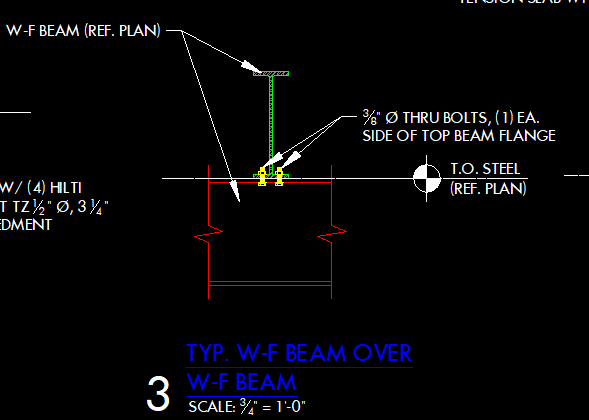Howdy Engineers!
I currently have a project where I am designing a steel frame to support punching bags at a fitness center. The main wideflange beam supporting the punching bags is supported by an HSS column on one end, and on the other end rests on top of a wideflange beam and is bolted at the flanges. For analysis purposes, what is a reasonable value the unbraced length for LTB (Lby)? If the beam length is 25 feet, would it be prudent to increase the Lby because it isn't really fixed at one end? I would assume the true unbraced length is somewhere between L and 2L. Possibly take Lby as 1.5L?
Does this connection simply not meet code requirements for beam bracing at supports? It is just supporting punching bags so I don't want to be overly conservative with the design.

I currently have a project where I am designing a steel frame to support punching bags at a fitness center. The main wideflange beam supporting the punching bags is supported by an HSS column on one end, and on the other end rests on top of a wideflange beam and is bolted at the flanges. For analysis purposes, what is a reasonable value the unbraced length for LTB (Lby)? If the beam length is 25 feet, would it be prudent to increase the Lby because it isn't really fixed at one end? I would assume the true unbraced length is somewhere between L and 2L. Possibly take Lby as 1.5L?
Does this connection simply not meet code requirements for beam bracing at supports? It is just supporting punching bags so I don't want to be overly conservative with the design.


![[idea] [idea] [idea]](/data/assets/smilies/idea.gif)
![[r2d2] [r2d2] [r2d2]](/data/assets/smilies/r2d2.gif)